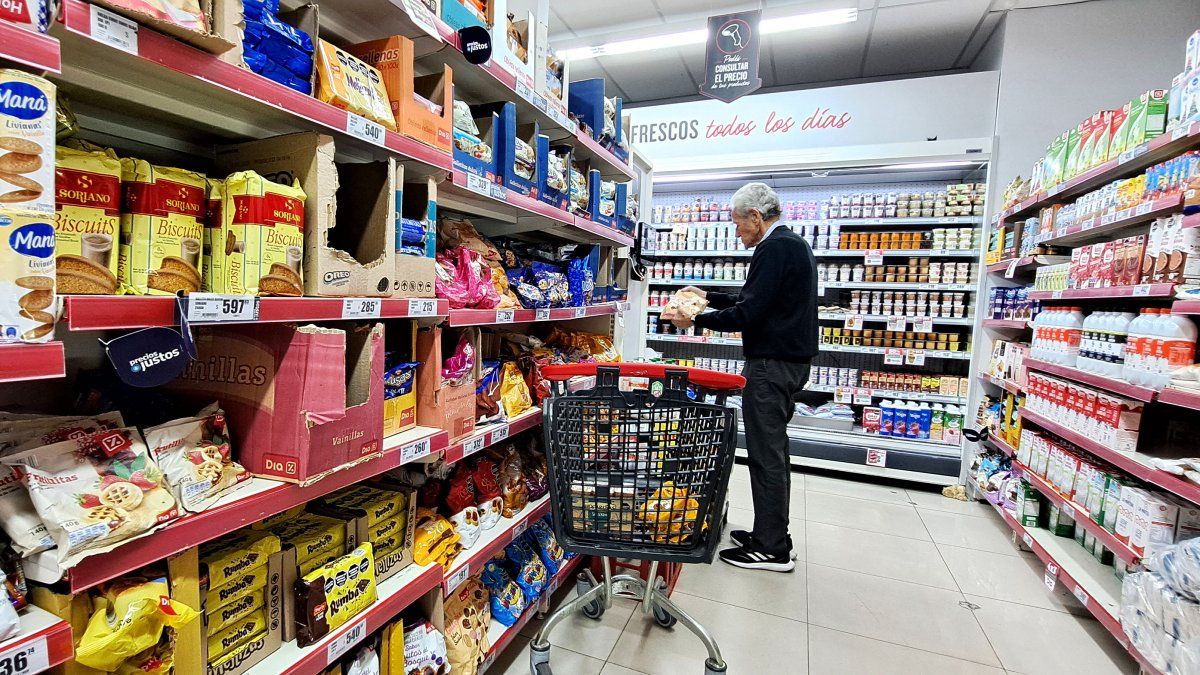If the analysis is repeated for the rest of the assets, the same conclusion could take place in the cases of clothing, footwear and medicines (although not necessarily for all the links of the respective productive chains), but not for food, equipment and maintenance of the home and electronic devices.
The study makes a comparison between the prices of different goods in Argentina measured in official dollars and in parallel dollars versus the prices of those same goods in other countries. In particular, prices from Brazil, Chile, Uruguay, Mexico and the United States are surveyed. Based on this comparison, three types of cases are identified.
On one hand, there a set of goods whose price measured at the official price is in line with that observed in the rest of the countries analyzed, or even below. Within this set of assets are the food. With some exceptions, it is observed that the price of food is similar to other comparable prices and even in cases where the local price exceeds the international price, the difference is low.
At the other extreme is clothing and footwear, whose price measured parallel is similar to the average for the countries in the sample, as are some technology products and high-end cars.
In a intermediate step there are some technological products such as cell phones that are assembled locally and low end carswhich, Although they are above the comparable price measured to the official one, they do not reach parallel.
History
The consultant complements the analysis with an evaluation of the historical dynamics of local prices and also in comparison with international ones. From this perspective, Although food prices in Argentina are higher than the official historical average, this seems to be explained by global dynamics (for example, the war in Ukraine) and in relative terms they remain cheap in international comparison measured in official dollars.
At one extreme we have the case of vehicleswhere it is observed that official measured prices grew 82% since December 2019 and they are 62% above the 2016-18 period. At the parallel exchange rate they also grew since December 2019 (+18%) and are only 15% below the 2016-18 period.
Although you cannot compare average prices, you can look at the evolution of the price of new vehicles within the US price index to get an idea of international price dynamics.
Between December 2019 and April 2023 this index increased 22%, well below the increase in the local price measured at the official exchange rate.
The analysis of the prices of the clothing and footwear returns a similar result: prices measured in official dollars increased 15% in the case of clothing and 32% for footwear compared to the 2016-18 period and increased 81% and 68%, respectively, since December 2019well above the evolution of the price of clothing internationally.
The same can be said of the prices of medicinal products. In the case of home equipment and maintenance and audiovisual and information processing equipment the conclusion is not so obvious. Although since December 2019 the prices measured at the official level increased between 35% and 40%, the current price level is similar to that of the 2016-8 period and measured at the parallel they are 45% below that period.
Unification
Given this price situation, the consulting firm pxq wonders:what could happen before an eventual unification of the exchange market that implies a devaluation of the official one?
Although the price of food – which accounts for almost 30% of the total consumer price index – is high in historical terms measured in official dollars, this seems to be the result of international dynamics and not of pricing in this sector. to parallel. Prices are in line with food prices in other countries in the region and a jump in the official exchange rate would be directly affected.
In the case of high-end automobiles, clothing, and footwear, both the photo of the price compared to other countries, and the film that reflects the dynamics of recent history, seem to show that pricing has more to do with the parallel dollar. Something similar is observed with medicinal products
Does this mean that before a unification they would not be affected? The consulting firm pxq maintains that it is not, but considers that the transfer to prices of the devaluation should be less than in the food item.
Finally, there is a group of electronic goods and home equipment whose price seems high in official dollars, but it is not so evident that their pricing is directly parallel. In this case, it could be argued that an eventual unification would affect them less than food, but more than automobiles, clothing, and medicines.
In conclusion, and broad line, The Álvarez Agis consultant points out that food prices are at the official exchange rate, while those of clothing and footwear, electronics and automobiles, at the parallel. Given this, it might be thought that the degree of pass-through of a devaluation of the official exchange rate to prices will be less to the extent that some prices are “already at the parallel exchange rate”.
However, he notes that the relevant question is to what extent a devaluation would impact. Analyzing the composition of the Consumer Price Index (CPI), it can be determined that close to 19% of the indicator has a dynamic that is more related to the parallel exchange rate than the official one, while 30% of the index (mainly food and beverages) is linked to variations in the official exchange rate (the remaining 51% are services, whose dynamics in principle do not depend on the exchange rate).
This means that, if the official exchange rate were to be devalued, 30% of the CPI would suffer a transfer of the devaluation to prices, while 19% could not be affected.
Thinking only of the first-round effects of an exchange rate unification, it is therefore calculated that a 100% devaluation of the official exchange rate would imply an acceleration of inflation of 20 percentage points.
Source: Ambito




